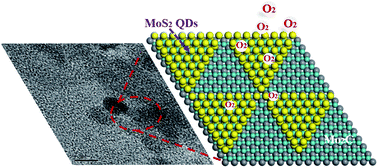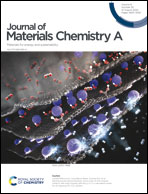Interface modulation of Mo2C@foam nickel via MoS2 quantum dots for the electrochemical oxygen evolution reaction†
Abstract
It is highly desirable and challenging to develop active, inexpensive and available catalysts for the oxygen evolution reaction (OER). Herein, we proposed a simple strategy to anchor MoS2 quantum dots (QDs) on the Mo facet in Mo2C@foam nickel to craft an atomic-level heterostructure (MoS2 QDs@Mo2C@NF). The MoS2 QDs confined in Mo2C established a significant link between the electronic manipulation and activities of Mo2C by combining experiments and first-principles calculations. The Mo facet in Mo2C acting as an electron catcher could accelerate the vertical transmission of electrons from MoS2 QDs to Mo2C and enrich electrons onto the Mo facet. Meanwhile, electrons on Mo2C by electro-excitation could quickly migrate to MoS2 QDs through the intimate Mo (Mo2C)–S bond interfaces, resulting in a highly effective interface with low edge contact resistance. The as-synthesized MoS2 QDs@Mo2C@NF exhibited considerable catalytic activity for the OER in 1 M KOH solution with an overpotential of 1.34 V at 10 mA cm−2 and Tafel slope of 57 mV dec−1 in comparison to RuO2@NF (1.35 V and 41 mV dec−1) owing to optimal adsorption energies of the OER intermediates on the MoS2 QDs@Mo2C@NF, which originated from a strong electronic coupling effect at the heterointerfaces. These results herald the interface modulation of the electrocatalysts in the presence of a support carrier providing a promising strategy for designing advanced electrocatalysts.



 Please wait while we load your content...
Please wait while we load your content...